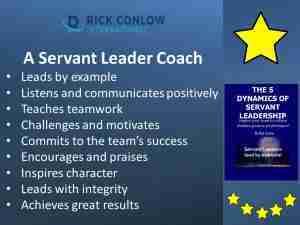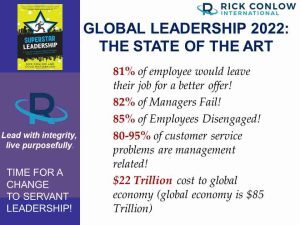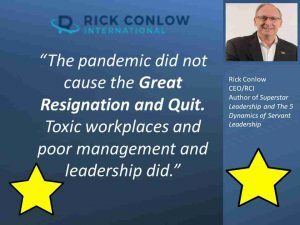Rick Conlow's Blog
November 6, 2023
Servant Leadership Coaching Your Superpower
Servant Leadership coaching your superpower means you elevate people-first. It requires a genuine commitment to lead right by helping employees succeed. It demands ethics, integrity, character, and honor in dealing with people. It is hard work to be a Servant Leader. Yet, the benefits are life-changing for you and your team. As Author Ann McGee Cooper declared, “The true heroes of the new millennium will be servant leaders, quietly working out of the spotlight to transform our world.”
One of our clients does business in a tough competitive industry. They had quality and customer service challenges. Our partnership with them included servant leadership training. In addition, we collaborated with them to institute a robust coaching process. This involved over 200 locations and six layers of management. The company’s sales goals required great improvement in employee engagement and customer experience.
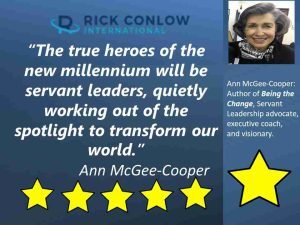 As a result, they blew the socks off their goals. Employees and customers alike commented positively on the change of culture. NPS and eNPS numbers soared. Sales results beat the competition. Servant leadership coaching became their superpower.
As a result, they blew the socks off their goals. Employees and customers alike commented positively on the change of culture. NPS and eNPS numbers soared. Sales results beat the competition. Servant leadership coaching became their superpower.
Servant leadership coaching demonstrates superior results to other leadership and coaching approaches. The effectiveness of any coaching approach depends on the context, goals, and needs of the individuals or teams being coached. And the expertise of the coach.
Empowerment and Ownership: Servant leadership coaching empowers individuals by involving them in decision-making and problem-solving processes. This approach encourages employees to take ownership of their development, fostering a sense of autonomy and accountability. Traditional coaching may sometimes involve more directive approaches that may not promote as much self-discovery and ownership.Long-Term Growth: Servant leaders tend to focus on the long-term growth and well-being of their team members. When applied to coaching, this approach prioritizes not only immediate performance but also the employee’s overall development and future success. Traditional coaching may sometimes be more goal-oriented and transactional.Trust and Relationships: Servant leaders prioritize building strong, trust-based relationships with their team members. When applied to coaching, this approach often results in deeper connections and open communication between coach and employees. Traditional coaching tends to be more task-oriented and transactional, with less emphasis on building strong relationships.Collaboration and Support: Servant leadership coaching often involves a collaborative, supportive approach where the coach acts as a partner and advocate for the employee’s growth. Traditional coaching may sometimes be seen as more hierarchical, with the coach perceived as an expert or authority figure.Employee Engagement: Servant leaders are often associated with higher levels of employee engagement. When applied to coaching, this approach can lead to greater employee initiative and commitment to the coaching process. Traditional coaching may not always foster the same level of engagement.Organizational Culture: Servant leadership coaching aligns well with organizations that have a culture of trust, collaboration, and employee development. In such environments, servant leadership coaching may be a more natural fit. Traditional coaching tends to be better suited to organizations with a more hierarchical or results-focused culture.Sustainable Change: Servant leadership coaching may be more effective in facilitating lasting behavioral and mindset changes. By focusing on the employee’s values, strengths, and intrinsic motivations, servant leaders can help individuals develop habits and perspectives that endure over time. Traditional focus tends to focus on results this day or month.The Servant Leadership Coaching Superpower ProcessThe ideal coaching process is a structured and goal-oriented approach designed to help individuals or teams achieve specific objectives, enhance their skills, and reach their full potential. The coaching process will vary depending on the context and goals. However, great coaching uses a variety of tools to bring out the best in each person. Consequently, the leader coach must be well trained, rehearsed, and committed to achieve outstanding results as identified earlier.
Initial Assessment and Goal Setting:The coaching process typically begins with an initial assessment phase. During this phase, the coach and employee (the individual or team being coached) establish a coaching agreement, clarify expectations, and define specific goals and objectives. It is essential that these goals are SMART (Specific, Measurable, Achievable, Relevant, and Time-bound).Data Gathering and Self-Assessment:Coaches often gather data to gain a better understanding of the employee’s strengths, weaknesses, challenges, and opportunities for growth. Self-assessment tools, 360-degree feedback, and other assessment methods may be used to provide insights.Development of Coaching Plan:Based on the goals and assessment findings, the coach collaborates with the employee to develop a coaching plan. This plan outlines the strategies, actions, and milestones needed to achieve the desired outcomes.Coaching Sessions:Coaching sessions are at the heart of the coaching process. They are typically one-on-one interactions between the coach and employee, although team coaching sessions are also common. These sessions focus on exploring issues, setting priorities, problem-solving, and providing guidance and support.However, an added feature of Servant Leadership involves informal coaching. This means short messages or face to face interactions that reinforce employee goals and performance. Such as, text messages, email messages, phone calls, portal messages, and random personal connections.Feedback and Reflection:Coaches provide regular and constructive feedback to the employee. The employee reflects on their progress, identifies areas for improvement, and considers new perspectives gained through coaching.Skill Development and Action Planning:Coaches assist the employee in developing specific skills or competencies necessary to achieve their goals. Action plans are created to outline concrete steps and timelines for skill development and implementation.Accountability and Follow-Up:Coaches hold the employee accountable for their commitments and actions. They provide ongoing support and encouragement while tracking progress toward the established goals.Assessment of Progress:Periodically, the coach and employee assess progress towards the goals and make any necessary adjustments to the coaching plan. This may involve revising objectives, strategies, or action plans.Closure and Transition:When the employee has achieved their goals or is satisfied with their progress, the coaching relationship comes to a structured closure. The coach and employee review accomplishments, reflect on the coaching journey, and discuss strategies for maintaining growth and development independently.Post-Coaching Evaluation:After the coaching process concludes, it’s valuable to conduct an evaluation to assess the impact of coaching. This can include feedback from the employee, their supervisor, or other stakeholders.Long-Term Support and Sustainability:In some cases, ongoing support or follow-up coaching sessions may be recommended to ensure sustained growth and development.Confidentiality and Ethical Considerations:Throughout the coaching process, confidentiality and ethical guidelines are maintained, ensuring a safe and trusting coaching environment.CCL conducts research on leadership development, and their studies emphasize the role of coaching in leadership. They’ve found that coaching improves leadership effectiveness, and leaders who are effective coaches have a positive impact on their teams and organizations.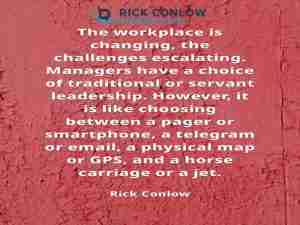 The ideal servant leadership coaching process is a collaborative journey toward achieving meaningful and measurable results. Plus, personal growth and career success for the employee. For it to work, the servant leader coach must demonstrate a service focus and value. This means a people-first attitude while helping the employee to succeed. When this happens, the manager succeeds. Traditional coaching tends to focus on the company or manager’s goals and their success.
The ideal servant leadership coaching process is a collaborative journey toward achieving meaningful and measurable results. Plus, personal growth and career success for the employee. For it to work, the servant leader coach must demonstrate a service focus and value. This means a people-first attitude while helping the employee to succeed. When this happens, the manager succeeds. Traditional coaching tends to focus on the company or manager’s goals and their success.
We partnered with a client in digital technology. Their industry faced rapid changes. To keep up with customer needs and competitive pressures they needed their teams to be more productive. After collaborative assessing these challenges, one strategy involved aggressive frontline Servant Leadership coaching at the point of the point of customer contact. The company measured and tracked this.
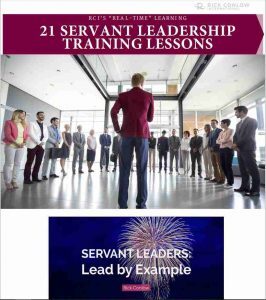
#image_title
Furthermore, we executed supportive reinforcement coaching using technology. This meant employees and managers connected in real-time and multiple times through a day. These approaches created a stream of on-going positive interactions and communication. Their eNPS score soared over 90% and the eNPS score exceeded 70%.
Transform your coaching skills from good to great. As Ken Blanchard declared, “In the past a leader was a boss. Today’s leaders must be partners with their people… they no longer can lead solely based on positional power.”
Why not join us on LinkedIn for the Servant Leadership revolution that is taking place about the power of people? Go here: ServantLeadership@RickConlow International. THANK YOU!
Also, click here for excellent insight to transform from a good to great coach, through a complimentary resource called– How Does Servant Leadership Work?
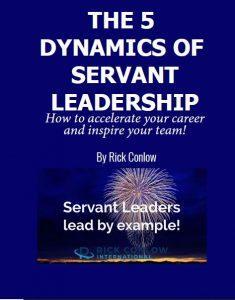 In addition, see our RealTime Learning & Training leadership and personal development website–over 250 resources. Micro-learning and career advancement at your fingertips!
In addition, see our RealTime Learning & Training leadership and personal development website–over 250 resources. Micro-learning and career advancement at your fingertips!
Finally, see Rick’s newest book. The 5 Dynamics of Servant Leadership: How to accelerate your career and inspire your team! See his newest self-directed leadership training: 21 Servant Leadership Training Lessons.
CEO/Founder, Rick Conlow International: RCI transforms managers from good to great coaches and trains them to become Servant Leaders. Clients achieve record-breaking performances in sales growth, customer experience improvement, employee engagement and leadership effectiveness. Furthermore, RCI’s online resources coach and train all managers or employees to higher levels of career success.
Partner with RCI Consulting Services. Visit the RCI store: Books & Training Resources.The post Servant Leadership Coaching Your Superpower appeared first on Rick Conlow.
October 19, 2023
Transforming from a Good to Great Coach
Transforming from a good to great coach equals turning disengaged employees into top performers. However, employees today are restless. They quiet quit, loud quit, quit without notice, and are more disengaged, and disloyal than ever. Furthermore, 70% will quit for a better offer. About 38% of quitters leave in about a year. And people 25-34 have a tenure of 2.8 years which is significantly lower than other age groups Have you noticed?
Why is this happening? Unfortunately, research shows 82% of managers fail and are poor coaches. And globally, 85% of employees are disengaged. Since you are reading this article, we assume you are a good coach, and you are interested in elevating your approach. Consequently read, study, and apply the comprehensive concepts described here. It will establish you on the path to becoming a great coach. This means enhancing your career and team’s success.
 13 Reasons Managers Fail at Coaching
13 Reasons Managers Fail at CoachingCheck out these thirteen reasons managers may struggle or fail at coaching:
Lack of Training and Skill: Corporations promote managers based on their technical expertise or job performance but may not receive proper training in coaching skills. Effective coaching requires a distinct set of skills that managers often lack.Time Constraints: Managers often have heavy workloads and may feel overwhelmed by their day-to-day responsibilities. As a result, they may not prioritize coaching or allocate sufficient time to it. Coaching requires time and effort. Yet, a landmark study demonstrated that the average manager invests only four hours a week in people’s engagement.Misunderstanding of Coaching: Managers tend to have a mistaken view of coaching, believing it primarily involves telling employees what to do or solving their problems for them. Effective coaching, however, is about facilitating the employee’s self-discovery and problem-solving skills.Resistance to Change: Both managers and employees may resist coaching if they perceive it as a critique of their performance or a threat to their autonomy. Managers tend to avoid coaching conversations to avoid conflict or discomfort or dealing with poor performance.Inadequate Feedback: Managers may not provide timely and constructive feedback to employees, which is a crucial aspect of coaching. Without regular feedback, employees may not know where they stand or what they need to improve, hindering their development.Lack of Trust and Relationship Building: Coaching relies heavily on trust and a strong manager-employee relationship. Managers who fail to build trust or maintain a positive relationship with their team members may struggle to engage them in coaching conversations.One-Size-Fits-All Approach: Managers who use a one-size-fits-all coaching approach may not consider the unique needs, strengths, and developmental areas of each employee. Great coaching requires tailoring the approach to everyone’s circumstances.Inconsistent Coaching Practices: Managers who are inconsistent in their coaching practices may confuse employees and create uncertainty. Consistency in approach, feedback, and expectations is essential for effective coaching.Lack of Follow-Up: Effective coaching involves not only initial conversations but also ongoing follow-up and support. Managers who fail to follow-up and monitor progress may miss opportunities to reinforce positive changes and address challenges.Failure to Set Clear Goals: Coaching without clear, specific, and measurable goals can be aimless and ineffective. Managers should collaborate with employees to set clear objectives and track progress toward those goals.Ignoring Personal Development: Managers may focus solely on task-related coaching and neglect to support employees in their personal and professional development. Great coaching considers both short-term performance and long-term growth.Not Seeking Feedback, Themselves: Managers who do not seek feedback on their coaching practices may miss opportunities for improvement. Being open to feedback and self-assessment can help managers become more effective coaches.Lack of Empathy: Let us face it, some managers just do not care. They do not consider the development or success of people as part of their job. They just want the employees to do what they tell them to do.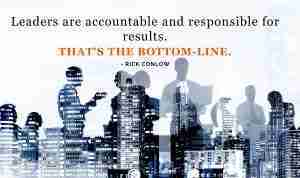 Research on the Bottom-line Payoff of Moving from a Good to Great Coach
Research on the Bottom-line Payoff of Moving from a Good to Great CoachResearch on the bottom-line payoff of coaching has demonstrated its significant benefits for individuals, teams, and organizations. Consider the potential for your team or company based on these tremendous results.
International Coach Federation (ICF) Research: The ICF conducts extensive research on coaching, and their studies have found that 70% of individuals who received coaching reported improved work performance, communication skills, and productivity. In addition, the study showed that organizations that provide coaching to their employees report improved performance and productivity, with 86% of organizations saying they recouped their investment in coaching.The Conference Board’s “Executive Coaching Survey” (2018): This survey found that 68% of organizations use internal coaching programs, and 47% use external coaching programs. It also highlighted that coaching is highly effective in developing leadership skills.American Management Association (AMA) Survey (2019): According to this survey, 62% of organizations offer coaching or mentoring to help employees reach their full potential, and 64% of organizations believe that coaching positively impacts performance.Deloitte’s “Global Human Capital Trends” Report (2021): Deloitte’s report indicates that coaching and mentoring programs have become crucial for leadership development, with 75% of respondents considering them important or especially important.Personnel Management: A study compared training alone to coaching and training. It found that training alone increased productivity 22.4%. By adding coaching to the program productivity increased to 88%.Price Waterhouse Coopers (PwC) and the Human Capital Institute (HCI): Studies have shown that coaching programs yield a positive return on investment (ROI), with estimates of ROI ranging from 5:1 to 7:1 or even higher.These research findings underscore the tangible benefits of coaching in terms of performance, leadership development, employee engagement, innovation, and financial outcomes. As a result, image the impact on your career as you transition from a good to great coach.
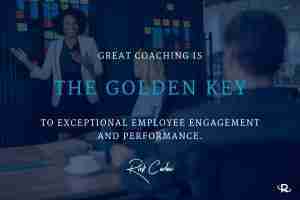 10 Companies that Exemplify the Value of a Great Coach
10 Companies that Exemplify the Value of a Great CoachA handful of companies do an outstanding job of creating a positive culture through coaching. Here are ten notable examples:
Google: Google is renowned for its robust coaching culture. The company offers its employees access to professional coaches who provide guidance on various aspects of personal and professional development. Google’s “G2G” (Googler to Googler) program encourages employees to share their knowledge and experiences through coaching and mentoring relationships.IBM: IBM has a long history of investing in coaching and mentoring programs for its employees. The company’s coaching initiatives focus on leadership development, skills enhancement, and career growth.Salesforce: Salesforce is committed to employee development and growth through coaching. The company offers a formal coaching program called “V2MOM” (Vision, Values, Methods, Obstacles, Measures), where employees create and discuss their goals and receive coaching for support to achieve them.General Electric (GE): GE has a strong tradition of leadership development and coaching. Their Crotonville Leadership Institute offers a range of coaching and mentoring programs for employees at all levels.Cisco: Cisco is known for its “Team Leader as Coach” program, which trains managers to become effective coaches. The program focuses on developing coaching skills and incorporating coaching into everyday leadership practices.McKinsey & Company: As a global management consulting firm, McKinsey places a high value on coaching. The company provides extensive training for its consultants to develop coaching skills and offers coaching to clients as part of its services.Procter & Gamble (P&G): P&G has a coaching-centric approach to leadership development. The company emphasizes coaching as a critical leadership skill and provides training and resources for its managers.LinkedIn: LinkedIn dedicates itself to employee growth and development through coaching. The company offers various programs, including executive coaching and career development coaching.Adobe: Adobe promotes coaching as a means of fostering a growth mindset among its employees. The company offers both internal and external coaching programs to support leadership development and skills enhancement.Microsoft: Microsoft has a robust coaching culture, with a focus on continuous learning and development. The company provides coaching and mentoring opportunities for employees at all career stages.Each company above invests the time and money it takes to train and coach leaders to be great coaches. It is not a one-time deal. To work it there must be an established commitment from executives to management and employees that coaching involves their way of doing business.
 13 Areas that Moves You from a Good to Great Coach
13 Areas that Moves You from a Good to Great CoachThe work culture at the above companies favors good relationships with employees. While a positive culture starts at the top, every manager produces a departmental culture that may or may not be good or the same as the company’s culture. Bottom-line, transforming from a good to great coach, managers can establish an exemplary team culture that inspires people to do their best.
Great coaching plays a crucial role in facilitating an uplifting culture by emphasizing the areas that help people become high performers. Research—see below–shows that when a leader coaches by emphasizing and communicating positively about the areas below employees often dramatically improve their efforts and results. Of course, you do not do all of these at once but overtime with each individual employee.
Skill DevelopmentGoal AchievementConfidence BuildingPersonalized FeedbackAccountabilityManaging Poor Performance to Better PerformanceConflict ResolutionContinuous LearningLeadership Development in employeesEmotional SupportRecognitionPersonal GrowthOptimal Performance, Productivity, Sales, Customer Service, Employee Retention, and Employee EngagementIn summary, great coaching is not for the faint of heart. It is the single most valuable skill that empowers individuals to reach their full potential, whether in their personal lives, careers, or various skill-based endeavors. It requires guidance, support, and accountability, fostering growth, development, and time-management. Anybody can coach poorly. Managers only learn to become master coaches through on-going training, hard work, diligence, and persistence.
21 Best Practices of a Good to Great Coaching ProcessStudies on the greatest coaches in the world identified critical success factors or best practices. Notice these practices take a Servant Leadership approach by focusing on the employees personal and professional success. Learn and adapt these to your situation. Remember, the best coaches follow the advice of former President John F. Kennedy, “Leadership and learning are indispensable to one another.”
Coach Continuously and Consistently:Continuous Informal Coaching: A manager coaches continuously by integrating positive supportive communication in daily planned or unplanned communication with employees. (In the hallway, an email, a text, answering an employee question, or phone call.)Consistent Formal Coaching: A manager also must set up regular weekly to monthly one-on-ones for performance discussions. These meetings involve 20-60 minutes. You take notes and track your discussions over time.Establish Clear Goals and Expectations:Clearly define the purpose and objectives of the coaching relationship.Set specific, measurable, achievable, relevant, and time-bound (SMART) goals.Build Trust and Rapport:Create a safe and confidential environment where the individual feels comfortable sharing thoughts and concerns.Trust reigns when you foster open, honest, and positive communication in the working relationship. This becomes more important than the reporting structure and authority of the manager.Active Listening:Pay close attention to what the individual is saying, both verbally and non-verbally.Ask clarifying questions to gain a deeper understanding of their perspective.Empathetic Understanding:Show empathy and understanding towards the individual’s feelings and experiences.Validate their emotions and perspectives.Ask Powerful Questions:Use open-ended questions that encourage an employee’s self-reflection and exploration. Your goal is for them to become self-directed and independent performers. For example:What is working on your plan?What problems did you encounter?How did you handle those problems?What can you learn from what happened?Avoid leading or judgmental questions.Provide Constructive Feedback:Offer feedback that is specific, timely, and constructive. No blaming or shaming.Focus on behaviors and actions rather than personal characteristics.Use Strengths-Based Approaches:Identify and leverage the individual’s strengths to help them achieve their goals.Encourage self-discovery of strengths and talents.Customize Coaching Techniques:Tailor coaching methods to the individual’s unique needs and preferences.Be flexible in adapting your coaching style.Set Action Plans:Collaborate with the individual to create actionable steps toward their goals. Help them learn what the plan should be. Ask, what do you think the next steps should be? Or what are your ideas for an action plan?Ensure these steps are realistic and manageable.Monitor Progress:Regularly review progress and provide ongoing support and feedback. Do this with informal coaching and in scheduled one-on-one meetings.Adjust the coaching approach as needed based on results.Promote Accountability:Hold the individual accountable for their commitments and actions. Do this constructively. No blaming, yelling, screaming, or shaming. Instead focus on results and the action steps moving forward.Encourage them to take ownership of their development.Maintain Confidentiality:Respect the confidentiality of the coaching relationship and any sensitive information shared.Clearly communicate the boundaries of confidentiality.Encourage Self-Reflection:Promote self-awareness and self-reflection by asking questions that prompt deeper thinking.Help the individual gain insights into their behavior and choices.Focus Continual Learning and Development:Involve your team in best practices through training and relevant industry knowledge.Seek opportunities for your own professional development as a coach.Evaluate and Measure Outcomes:Assess the impact of coaching on the individual’s performance and development.Use feedback and data to refine your coaching approach.Establish Closure and Transition:Plan for a structured closure to the coaching relationship moving forward from one plan or goal to another.Discuss progress and how the individual will continue their development independently.Ethical Conduct:Adhere to a code of ethics, honesty, humility, and professional standards in coaching.Avoid conflicts of interest and maintain integrity.Give Specific Feedback for Improvement:Seek feedback from your team to continually improve your coaching skills.Give real time positive and constructive feedback to your team to reinforce strengths and neutralize weaknesses.Demonstrate Cultural Sensitivity and Inclusivity:Be culturally aware and sensitive to the individual’s background and perspectives. This requires empathy and care.Avoid making assumptions based on cultural or demographic factors.Be Flexible and Adaptable:Be prepared to adjust your coaching approach as the individual’s needs evolve.Flexibility is key to accommodating changing circumstances.
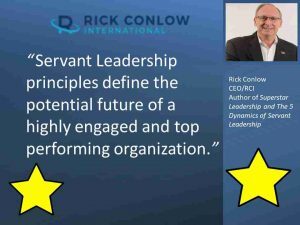
The average manager spends less than three hours a week on people matters. You cannot move from a good coach to a great coach with that. Research shows the great managers invest thirty hours a week working with their team. This means Servant Leadership practices elevating people-first.
Coaching can dramatically improve performance. See this example.
One of our clients asked us to teach their managers to coach. They wanted to improve sales to existing customers. They were struggling and losing clients to a new and larger competitor. They were a good company and were celebrating eighty years in business. While they knew their market, they did have the coaching know how or culture. We assessed their situation and collaboratively with their key managers rolled out a plan. It involved four phases: Planning, Training, Coaching, and Renewing. Each phase included input from local managers at their key locations in twenty cities.
The company scheduled training and planning sessions for the Spring and Fall seasons. In addition, they established on-site visits for all locations in between these sessions. Managers learned how to do one-on-one coaching sessions, depending on the situation, daily to weekly, with their customer service reps. Branch leaders scheduled weekly training meetings. Regional leaders held virtual team conferences monthly with district and local service leaders. Plus, we added an incentive recognition plan for every level. We delivered weekly robust and informative communication. Team spirit swept the organization to reach a 15% goal for improvement which kicked in varied incentives. By year end they achieved a 75% gain and added 48% gain the next year. It blew the executives away.
Why did it work? We included the team, gave them amble support, recognized their achievement and maintained a positive uplifting process. They always had the talent and capability. Furthermore, the managers moved from average or good to great coaching. Their innovative approach to coaching became a way of doing business. By learning and applying the principles in this article, and a relentless focus on the positive, they excelled.
In conclusion, consider these powerful coaching quotes as motivators to transition from a good to great coach.
“I believe that wherever there is mastery, coaching is occurring and whenever coaching is done, mastery will be the outcome.” Andrea J. Lee“The manager needs to have a coaching mindset, looking for opportunities to help others learn…. The coach and coachee relationship must be one that rests on a foundation of trust that can allow the coaching dialogue to take place.” James M. Hunt“Everything in coaching hinges on listening because what we are listening for affects where we are speaking from and unfolds how we are being with and for each other.” Marilyn Atkinson & Rae Chois,“Probably my best quality as a coach is I ask a lot of questions and let the person come up with the answers.” Phil Dixon“A manager is a title; it does not guarantee success. Coaching is an action, not a title and actions will result in successes!” Catherine Pulsifer“Coaching is a profession of love. You cannot coach people unless you love them.” Eddie Robison“I realized that life had much more to offer than I had anticipated and decided to help others in their human journey. Therefore, I became a trainer and a coach with passion for transformation.” Ann Betz“Coaching is a unique process of human development, one that works to change a person’s life for the better and help him or her achieve a number of specific objectives.” Ian Berry“I absolutely believe that people, unless coached, never reach their maximum potential.” Bob Nardelli“Coaches and the people they coach know that for the future to be different, we need to change the way we do things in the present…. More often, changes involve shifts in attitudes, thinking, perceptions, and behavior.” Gary Collins“A coach can play any number of roles-mentor, consultant, motivator, but one thing she is not is a therapist. Coaching deals with the “how”: how you move from where you are and make change. It is action oriented and concerned with the present and future not the past.” Shape Magazine*Note: ChatGPT used for research.
Why not join us on LinkedIn for the Servant Leadership revolution that is taking place about the power of people? Go here: ServantLeadership@RickConlow International. THANK YOU!
Also, click here for excellent insight to transform from a good to great coach, through a complimentary resource called– How Does Servant Leadership Work?
 In addition, see our RealTime Learning & Training leadership and personal development website–over 250 resources. Micro-learning and career advancement at your fingertips!
In addition, see our RealTime Learning & Training leadership and personal development website–over 250 resources. Micro-learning and career advancement at your fingertips!
Finally, see Rick’s newest book. The 5 Dynamics of Servant Leadership: How to accelerate your career and inspire your team! See his newest self-directed leadership training: 21 Servant Leadership Training Lessons.
CEO/Founder, Rick Conlow International: RCI transforms managers from good to great coaches and trains them to become Servant Leaders. Clients achieve record-breaking performances in sales growth, customer experience improvement, employee engagement and leadership effectiveness. Furthermore, RCI’s online resources coach and train all managers or employees to higher levels of career success.
Partner with RCI Consulting Services. Visit the RCI store: Books & Training Resources.The post Transforming from a Good to Great Coach appeared first on Rick Conlow.
September 24, 2023
The 60 Most Potent and Greatest Quotes of All Time
To achieve a greatest quotes of all time status, the author must be well known, and the quote must inspire the reader to believe bigger. While there are other famous quotes, these quotes epitomize the best of the best. They encompass wisdom, inspiration, and timeless insights from a diverse group of individuals. All the authors lead by example in their own lives. Each contributes to our understanding of life, success, and human experiences.
Copy the greatest quotes you like and help others by sharing this post today.
 20 of the Greatest and Most Potent Quotes“To be yourself in a world that is constantly trying to make you something else is the greatest accomplishment.” — Ralph Waldo Emerson“The question isn’t who’s going to let me; it’s who is going to stop me.” — Ayn Rand“A new command I give you: Love one another. As I have loved you, so you must love one another.” — Jesus Christ“In three words I can sum up everything I’ve learned about life: it goes on.” — Robert Frost“The only thing necessary for the triumph of evil is for good men to do nothing.” — Edmund Burke“I raise up my voice—not so I can shout, but so that those without a voice can be heard… we cannot succeed when half of us are held back.” — Malala Yousafzai“Love has no age, no limit; and no death.” — John Galsworthy“The only thing we have to fear is fear itself.” — Franklin D. Roosevelt“Everybody can be great because everybody can serve.” — Martin Luther King Jr.“The most difficult thing is the decision to act, the rest is merely tenacity.” — Amelia Earhart“Life is what happens when you’re busy making other plans.” — John LennonThe best preparation for tomorrow is doing your best today.” — H. Jackson Brown, Jr“You have within you the strength, the patience, and the passion to reach for the stars to change the world.” — Harriet Tubman“In the end, it’s not the years in your life that count. It’s the life in your years.” — Abraham LincolnKeep your face always toward the sunshine and shadows will fall behind you.” — Walt Whitman“Once you figure out what respect tastes like, it tastes better than attention.” — Pink“You must be the change you wish to see in the world.” — Mahatma Gandhi“The best way to predict the future is to create it.” — Peter Drucker“Success is not final, failure is not fatal: It is the courage to continue that counts.” — Winston Churchill“The only thing standing between you and your goal is the story you keep telling yourself as to why you can’t achieve it.” — Jordan Belfort
20 of the Greatest and Most Potent Quotes“To be yourself in a world that is constantly trying to make you something else is the greatest accomplishment.” — Ralph Waldo Emerson“The question isn’t who’s going to let me; it’s who is going to stop me.” — Ayn Rand“A new command I give you: Love one another. As I have loved you, so you must love one another.” — Jesus Christ“In three words I can sum up everything I’ve learned about life: it goes on.” — Robert Frost“The only thing necessary for the triumph of evil is for good men to do nothing.” — Edmund Burke“I raise up my voice—not so I can shout, but so that those without a voice can be heard… we cannot succeed when half of us are held back.” — Malala Yousafzai“Love has no age, no limit; and no death.” — John Galsworthy“The only thing we have to fear is fear itself.” — Franklin D. Roosevelt“Everybody can be great because everybody can serve.” — Martin Luther King Jr.“The most difficult thing is the decision to act, the rest is merely tenacity.” — Amelia Earhart“Life is what happens when you’re busy making other plans.” — John LennonThe best preparation for tomorrow is doing your best today.” — H. Jackson Brown, Jr“You have within you the strength, the patience, and the passion to reach for the stars to change the world.” — Harriet Tubman“In the end, it’s not the years in your life that count. It’s the life in your years.” — Abraham LincolnKeep your face always toward the sunshine and shadows will fall behind you.” — Walt Whitman“Once you figure out what respect tastes like, it tastes better than attention.” — Pink“You must be the change you wish to see in the world.” — Mahatma Gandhi“The best way to predict the future is to create it.” — Peter Drucker“Success is not final, failure is not fatal: It is the courage to continue that counts.” — Winston Churchill“The only thing standing between you and your goal is the story you keep telling yourself as to why you can’t achieve it.” — Jordan Belfort
 20 Additional Greatest Quotes of All-Time“We do not need magic to change the world, we carry all the power we need inside ourselves already. We have the power to imagine better.” — J.K. Rowling“Don’t cry because it’s over, smile because it happened.” — Dr. Seuss“To love and be loved is to feel the sun from both sides.” — David Viscott“I am my best work—a series of road maps, reports, recipes, doodles, and prayers from the front lines.” — Audre Lorde“The greatest happiness you can have is knowing that you do not necessarily require happiness.” — William Saroyan“Do not dwell in the past, do not dream of the future, concentrate the mind on the present moment.” — Buddha“The only true wisdom is in knowing you know nothing.” — Socrates“The future belongs to those who believe in the beauty of their dreams.” — Eleanor Roosevelt“To be yourself is all that you can do.” — Chris Cornell“Life without love is like a tree without blossoms or fruit.” — Khalil Gibran“We know what we are, but know not what we may be.” — William Shakespeare“The greatest wealth is to live content with little.” — Plato“The future depends entirely on what each of us does every day; a movement is only people moving.” — Gloria Steinem“Happiness is not something ready-made. It comes from your own actions.” — Dalai Lama“All our dreams can come true, if we have the courage to pursue them.” — Walt Disney“The only thing that is constant is change.” — Heraclitus“To be yourself in a world that is constantly trying to make you something else is the greatest accomplishment.” — Maya Angelou“You may say I’m a dreamer, but I’m not the only one. I hope someday you’ll join us. And the world will live as one.” — John Lennon“You miss 100% of the shots you don’t take.” — Wayne Gretzky“The best time to plant a tree was 20 years ago. The second-best time is now.” — Chinese Proverb
20 Additional Greatest Quotes of All-Time“We do not need magic to change the world, we carry all the power we need inside ourselves already. We have the power to imagine better.” — J.K. Rowling“Don’t cry because it’s over, smile because it happened.” — Dr. Seuss“To love and be loved is to feel the sun from both sides.” — David Viscott“I am my best work—a series of road maps, reports, recipes, doodles, and prayers from the front lines.” — Audre Lorde“The greatest happiness you can have is knowing that you do not necessarily require happiness.” — William Saroyan“Do not dwell in the past, do not dream of the future, concentrate the mind on the present moment.” — Buddha“The only true wisdom is in knowing you know nothing.” — Socrates“The future belongs to those who believe in the beauty of their dreams.” — Eleanor Roosevelt“To be yourself is all that you can do.” — Chris Cornell“Life without love is like a tree without blossoms or fruit.” — Khalil Gibran“We know what we are, but know not what we may be.” — William Shakespeare“The greatest wealth is to live content with little.” — Plato“The future depends entirely on what each of us does every day; a movement is only people moving.” — Gloria Steinem“Happiness is not something ready-made. It comes from your own actions.” — Dalai Lama“All our dreams can come true, if we have the courage to pursue them.” — Walt Disney“The only thing that is constant is change.” — Heraclitus“To be yourself in a world that is constantly trying to make you something else is the greatest accomplishment.” — Maya Angelou“You may say I’m a dreamer, but I’m not the only one. I hope someday you’ll join us. And the world will live as one.” — John Lennon“You miss 100% of the shots you don’t take.” — Wayne Gretzky“The best time to plant a tree was 20 years ago. The second-best time is now.” — Chinese Proverb
 20 More of the Greatest Quotes of All-Time“The greatest glory in living lies not in never falling, but in rising every time we fall.” — Nelson Mandela“When one door of happiness closes, another opens; but often we look so long at the closed door that we do not see the one which has been opened for us.” — Helen Keller“Many of life’s failures are people who did not realize how close they were to success when they gave up.” — Thomas A. Edison“There are two ways of spreading light: to be the candle or the mirror that reflects it.” — Edith Wharton“A ship is safe in harbor, but that’s not what ships are for.” — William G.T. Shedd“There is only one corner of the universe you can be certain of improving, and that’s your own self.” — Aldous Huxley“I can’t change the direction of the wind, but I can adjust my sails to always reach my destination.” — Jimmy Dean“The only way to do great work is to love what you do.” — Steve Jobs“There are no hopeless situations; there are only men who have grown hopeless about them.” —Clare Boothe Luce“The only thing necessary for the triumph of evil is for good men to do nothing.” — Edmund Burke“It does not matter how slowly you go as long as you do not stop.” — Confucius“Let us sacrifice our today so that our children can have a better tomorrow.” — A. P. J. Abdul Kalam“Well-behaved women seldom make history.” — Laurel Thatcher Ulrich“If you cannot do great things, do small things in a great way.” — Napoleon Hill“I am enough of an artist to draw freely upon my imagination.” — Albert Einstein“In three words I can sum up everything I’ve learned about life: it goes on.” — Robert Frost“No act of kindness, no matter how small, is ever wasted.” — Aesop“Being entirely honest with oneself is a good exercise.” — Sigmund Freud“The most common way people give up their power is by thinking they don’t have any.” — Alice Walker“Do not mind anything that anyone tells you about anyone else. Judge everyone and everything for yourself.” — Henry James
20 More of the Greatest Quotes of All-Time“The greatest glory in living lies not in never falling, but in rising every time we fall.” — Nelson Mandela“When one door of happiness closes, another opens; but often we look so long at the closed door that we do not see the one which has been opened for us.” — Helen Keller“Many of life’s failures are people who did not realize how close they were to success when they gave up.” — Thomas A. Edison“There are two ways of spreading light: to be the candle or the mirror that reflects it.” — Edith Wharton“A ship is safe in harbor, but that’s not what ships are for.” — William G.T. Shedd“There is only one corner of the universe you can be certain of improving, and that’s your own self.” — Aldous Huxley“I can’t change the direction of the wind, but I can adjust my sails to always reach my destination.” — Jimmy Dean“The only way to do great work is to love what you do.” — Steve Jobs“There are no hopeless situations; there are only men who have grown hopeless about them.” —Clare Boothe Luce“The only thing necessary for the triumph of evil is for good men to do nothing.” — Edmund Burke“It does not matter how slowly you go as long as you do not stop.” — Confucius“Let us sacrifice our today so that our children can have a better tomorrow.” — A. P. J. Abdul Kalam“Well-behaved women seldom make history.” — Laurel Thatcher Ulrich“If you cannot do great things, do small things in a great way.” — Napoleon Hill“I am enough of an artist to draw freely upon my imagination.” — Albert Einstein“In three words I can sum up everything I’ve learned about life: it goes on.” — Robert Frost“No act of kindness, no matter how small, is ever wasted.” — Aesop“Being entirely honest with oneself is a good exercise.” — Sigmund Freud“The most common way people give up their power is by thinking they don’t have any.” — Alice Walker“Do not mind anything that anyone tells you about anyone else. Judge everyone and everything for yourself.” — Henry James Pulling It All Together
Pulling It All TogetherNow act on what you learned or relearned from these greatest quotes. Apply these quotes to your work, family, and community. Be the kind of person that you would admire. Raise your sights and step forward today. Never look back. As Tony Robbins declared, “The only impossible journey is the one you never begin.”
Also, see the eBook: GoalPower, How to Increase Personal Performance and Career Success, you will gain a roadmap that only the best follow. The problem is that goal setting gets a bad rap. Too many people have set goals and never attained them. The action steps in GoalPower are an amalgamation of the best success advice from Napoleon Hill, Dr. Denis Waitley, Tony Robbins, William Clement Stone, Claude Bristol, and others in the self-help field.
 In addition, see our RealTime Learning & Training leadership and personal development website–over 250 resources. Micro-learning and career advancement at your fingertips!
In addition, see our RealTime Learning & Training leadership and personal development website–over 250 resources. Micro-learning and career advancement at your fingertips!
Finally, see Rick’s newest book. The 5 Dynamics of Servant Leadership: How to accelerate your career and inspire your team!
The post The 60 Most Potent and Greatest Quotes of All Time appeared first on Rick Conlow.
September 22, 2023
Achieving Customer Experience Leadership
This customer experience training video will share the state-of-the-art in the field. Unfortunately, it is not that good but that could be a benefit for you. Companies lose billions of dollars a year because of poor customer service. Few companies have learned how to get better and lead their markets. Most try and end up failing. Those who do well end up prospering.
Companies most often fail because they lack the commitment, patience, investment, values, and they do not know how. Saying they lack competence means no disrespect. Leaders focus more on their industry, finances, profitability, and marketing, they are not experts in helping customers. While they may talk a good game, they inadvertently sabotage any serious level of change and improvement through employee disengagement. Today, with online marketing and shopping the customer experience means the business experience any customer has with a company. Each customer’s moment of truth reigns crucial.
Achieving Customer Experience Leadership Video Training Rick shares how to improve the customers’ experience in your company. You will learn about:
Rick shares how to improve the customers’ experience in your company. You will learn about:
Every company delivers a customer experience. Few excel at it. Watch this video and take notes on what the requirements to succeed. While it takes hard work and persistence, the formula for success is ever present. Those leaders and companies who persevere (Amazon, Target, Wegmans, Disney, Nordstrom’s, and others), receive the payoff in greater sales growth, customer loyalty and profit.
 Also, do you want to learn more about becoming a customer experience leader? See our eBook: The Customer has the Power.
Also, do you want to learn more about becoming a customer experience leader? See our eBook: The Customer has the Power.
In addition, go here for our RealTime Learning & Training leadership and personal development website. Over 300 micro-learning and career advancement resources at your fingertips!
Finally, do you want to accelerate your leadership success? Go here for Rick’s Superstar Leadership eBook.
The post Achieving Customer Experience Leadership appeared first on Rick Conlow.August 31, 2023
The Power of Servant Leadership
The power of Servant Leadership is changing organization’s cultures. Why? Because it is the best alternative to traditional leadership practices that caused the Great Resignation and Quiet Quitting. And horrendous employee disengagement of 85% worldwide. On top of this, high levels of management disengagement bears down on company results and employee morale. Management’s morae suffers from a lack of support to make decisions, little or no training, and no sense of purpose except to make a profit for the company.
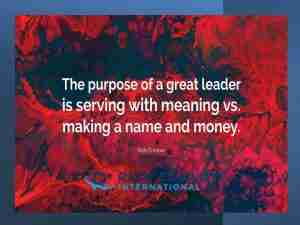 The Power of Servant Leadership Training
The Power of Servant Leadership TrainingIn this Servant Leadership video, you will learn:
Why Servant Leadership makes a difference.How it is different than current leadership practices.The 5 behaviors of Servant Leaders.7 qualities of Servant leaders.The powerful payoff of Servant Leadership Watch this video.Take notes and if you are a manager or executive prepare to change and win. By focusing on people over profits companies end up making more money. Executives, you must empower your management team. This will accelerate results. While a manager can create a high-performance team on his or her own. It is exceedingly difficult if executive actions and policies do not support it.
Pulling It All TogetherBottom-line Servant Leadership studies show employees are happier and perform at the highest levels. Any leader with a commitment to self-development and learning can become a Servant Leader. You must care about helping others succeed, too. In addition, be willing to put people first. When you help others win, you will win as well. Hear the opportunity in these Servant Leadership quotes.
“Servant leadership is all about making the goals clear and then rolling your sleeves up and doing whatever it takes to help people win. In that situation, they don’t work for you; you work for them.” Ken Blanchard“People do not care how much you know until they know how much you care.” John C. Maxwell“The true heroes of the new millennium will be servant leaders, quietly working out of the spotlight to transform our world.” Ann McGee-Cooper“Everybody can be great…because anybody can serve. You do not have to have a college degree to serve. You do not have to make your subject and verb agree to serve. Most importantly, you only need a heart full of grace. A soul generated by love.” Martin Luther King, Jr.“A noble leader answers not to the trumpet calls of self-promotion, but to the hushed whispers of necessity.” Mollie Marti“The servant-leader is servant first. It begins with the natural feeling that one wants to serve, to serve first. Then conscious choice brings one to aspire to lead.” Robert K. GreenleafAlso, add to or develop your skills as a Servant Leader. Go here: 21 Servant Leadership Training Lessons.
Furthermore, the world desperately needs leaders that have empathy and care. Join the revolution in leadership thought and practice that elevates people first through Servant Leadership on LinkedIn: ServantLeadership@RickConlowInternational
 Finally, do you want to accelerate your leadership success and learn more about Servant Leadership? Go here for Rick’s newest book, The Dynamics of Servant Leadership: Inspire Your Team to Achieve Extraordinary Goals!
Finally, do you want to accelerate your leadership success and learn more about Servant Leadership? Go here for Rick’s newest book, The Dynamics of Servant Leadership: Inspire Your Team to Achieve Extraordinary Goals!
August 21, 2023
Why Employee Recognition Matters in Today’s Workplace
Employee recognition is an often-undervalued approach. When executed well it elevates engagement and retention. In the battle for talent in an increasingly complex, disruptive, and competitive world, organizations cannot afford to miss this point. Culturally engrained employee recognition and appreciation matters in today’s workplace.
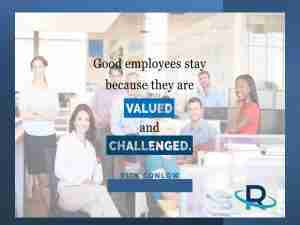 The High Payoff of Employee Recognition
The High Payoff of Employee RecognitionResearch shows employees with little, or no recognition exhibit decreased job satisfaction, higher turnover, lower productivity and engagement, and greater stress or burnout.
Research also adds that consistent recognition and praise can have significant positive effects on employee performance and loyalty.
For example, one of our clients wanted to increase sales results with existing customers. Through planning meetings, training, and coaching we ramped up the initiative. Management set a fifteen percent goal for improvement. We thought they could do more. So, we implemented a recognition program for customer reps and management. It included timely monthly and quarterly awards plus incentives. As a result, the company achieved a 75% gain! Through feedback, the company’s branches listed recognition and coaching as the top initiatives that helped.
Companies that achieve top-tier ratings for employee morale and engagement report the following gains.
Increased Employee Engagement: According to Gallup’s State of the Global Workplace report, employees who receive regular recognition are more likely to be engaged in their work. This results in higher productivity, lower turnover rates, and 21% more profit. Improved Employee Retention: The Society for Human Resource Management (SHRM) found that organizations with effective recognition programs experience 31% lower voluntary turnover than those without such programs.Boosted Job Satisfaction and Performance: A survey by Psychometrics revealed that 69% of employees say they would work harder if they received more recognition for their efforts.Impact on Performance: The Aberdeen Group found that organizations with effective employee recognition programs have a 14.6% higher employee performance compared to those without such programs.Positive Work Environment: The O.C. Tanner Institute’s 2020 Global Culture Report showed that 87% of organizations with a strong recognition culture reported a positive employer brand.Link to Employee Well-Being: A survey conducted by Globoforce in 2021 found that 84% of employees felt recognized by their manager reported lower stress levels.Appreciation and Effort: According to a survey by Glassdoor, 53% of employees felt that receiving recognition for their work would make them feel more appreciated.Connection to Happiness: The Harvard Business Review reported that employees who feel appreciated and recognized are not only more satisfied with their jobs but are also happier overall.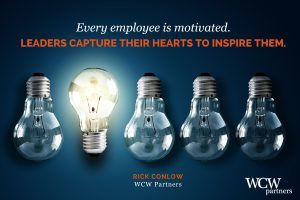 10 Examples of Company Employee Recognition Programs
10 Examples of Company Employee Recognition ProgramsWith a genuine commitment to employees, companies can creatively find ways to enhance their employee recognition and appreciation efforts. Learn from these ten examples.
Google – Google has a peer recognition program called “gThanks,” where employees can send “thank you” notes to their colleagues, praising their efforts and contributions.Salesforce – Salesforce has an internal recognition platform called “Thanks for the Win” (TFW). Employees can award each other “points” for exceptional work, and which they can redeem for various prizes.Facebook – Facebook has a recognition program called “Facebook Applause.” Employees can give “Applause” to their colleagues for going “above and beyond” in their roles, and the recognized employee receives a notification and appreciation message.Microsoft – Microsoft has a recognition program called “Thanks” that allows employees to send personalized notes of appreciation to their peers.Adobe – Adobe has an employee recognition platform called “Cheers for Peers.” Employees can send virtual “cheers” to each other to recognize their contributions.Amazon – Amazon has a recognition program called “Connections.” Employees can give each other virtual “kudos” for demonstrating Amazon’s Leadership Principles.IBM – IBM has a recognition program called “Catch Me at My Best,” where employees can acknowledge and celebrate their colleagues’ excellent work.Cisco – Cisco has a peer-to-peer recognition program called “Connected Recognition,” which allows employees to send recognition badges to each other for demonstrating company values and achieving success.Deloitte – Deloitte has an employee recognition program called “Applause.” Employees can send “applause” to their colleagues as a way of showing appreciation.Intel – Intel has a recognition program called “Spot Bonus Awards,” which allows managers to give on-the-spot bonuses to employees who have demonstrated outstanding performance. 12 Methods of Employee Recognition
12 Methods of Employee Recognition What are the best practices for recognizing and appreciating employees? Study these proven approaches.
Employee of the Month/Quarter/Year: This is a classic recognition program where a standout employee is identified for his/her exceptional performance, dedication, or contributions. The person may receive a plaque, certificate, or other rewards like gift cards or a reserved parking spot.Peer Recognition: In this program, employees can nominate their colleagues for recognition. Peers can acknowledge each other’s efforts and accomplishments, which helps build camaraderie and a sense of appreciation among team members.Spot Awards: These are spontaneous and immediate rewards given for specific actions or achievements. Spot awards are often small but meaningful gestures, such as gift cards or thank-you notes, to recognize excellent work in real-time.Longevity Awards: These programs celebrate employees’ loyalty and commitment to the company by recognizing their years of service. Timeframes like 5, 10, 15, or 20 years are commonly acknowledged milestones, and employees may receive gifts or special bonuses.Performance-Based Bonuses: Companies can implement performance-based bonus programs tied to specific targets or metrics. High-performing employees receive financial incentives as a reward for achieving their goals.Team-Based Rewards: Recognizing the collective efforts of teams is equally important. Companies can offer rewards like team outings, team lunches, or team-building activities when a group accomplishes significant milestones or achieves outstanding results.Employee Appreciation Events: Organizing events dedicated to showing appreciation for employees can be impactful. This might include annual recognition banquets, appreciation weeks, or themed celebrations.Personal Development Support: Recognizing employees’ aspirations for growth and providing opportunities for further education or skill development is a valuable recognition program.Wellness Initiatives: Acknowledging the importance of employee well-being, companies can have programs that promote wellness, such as gym memberships, mental health support, or wellness challenges with rewards.Innovation Awards: Recognizing and rewarding employees who produce innovative ideas, process improvements, or new products/services can encourage a culture of creativity and entrepreneurship.Customer Appreciation Programs: Employees who receive exceptional feedback from customers receive recognition and praise for their efforts.Global Recognition: For multinational companies, having a centralized recognition program that spans across distinct locations can promote a unified company culture and recognize outstanding employees worldwide.Remember, the success of any recognition program lies in its sincerity, consistency, and alignment with company values. Tailor the program to suit your organization’s unique culture to ensure that all employees have equal opportunities to receive recognition for their contributions.
 What Kind of Recognition Do Employees Really Want?
What Kind of Recognition Do Employees Really Want?Bottom-line, employee appreciation is more than a program. It is about the relationship of employees with their individual managers and the company. Employees want to know that their organization values them. And they want a positive environment to do their jobs. You do not have to spend a lot of money. Sixty-five percent of employee value non-monetary recognition over fiscal ones. Listed below are specific considerations for managers and organizations to elevate their efforts to deliver recognition.
Make it timely, genuine, and sincere.Observe and listen to employees–this is a form of recognition.Implement regular one-on-one performance discussions/check-ins.Encourage peer recognition.Align recognition with company values.Consider individual preferences.Use a variety of methods but a simple thank you or personal note works wonders. Personalize the recognition or praise.Connect recognition to career growth.Celebrate milestones and achievements.Ask for employee input.Lead by example.Why Do Managers Do a Poor Job of Employee Recognition?High employee disengagement includes high management disengagement. Managers deliver poor recognition because they are not receiving what they need from executives to be more effective. The company may have a toxic culture and employee praise is not a priority. As a result, financial resources are not allocated to assist the recognition effort. Consequently, elevated levels of stress lead to greater burnout and anxiety.
Managers often have multiple responsibilities and tasks on their plates, leaving them with limited time to focus on employee recognition. They may prioritize other urgent matters over recognition efforts. Managers may not have received proper training or guidance on how to effectively recognize and appreciate their employees. Consequently, they are poor in setting expectations, communicating, praising, and coaching. And they lack knowledge of the best practices for providing meaningful recognition.
Furthermore, managers may worry about showing favoritism if they recognize individual employees more than other employees. As a result, they might avoid recognition altogether to prevent any perceived bias. In too many cases, managers may prioritize achieving results over recognizing employee efforts. They might believe that employees should perform well as part of their job and, therefore, may not feel the need to recognize them separately. Finally, managers’ personalities and leadership styles can also play a role in their ability to provide effective recognition. Extroverted managers may naturally be more appreciative and expressive, while others may find it challenging to express praise.
Pulling It all Together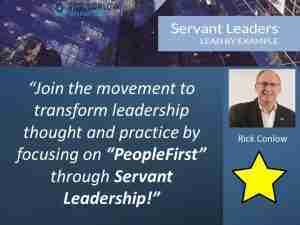 Creating a culture of appreciation and recognition starts in the executive offices. However, it is no excuse for any manager to do a consistently poor job of employee recognition and praise. You can learn and train yourself through individual initiative. That is what exceptional and servant leaders do. Finally, remember these quotes as they highlight the importance and value of employee recognition.
Creating a culture of appreciation and recognition starts in the executive offices. However, it is no excuse for any manager to do a consistently poor job of employee recognition and praise. You can learn and train yourself through individual initiative. That is what exceptional and servant leaders do. Finally, remember these quotes as they highlight the importance and value of employee recognition.
Why not join us on LinkedIn for the Servant Leadership revolution that is taking place about the power of people? Go here: ServantLeadership@RickConlow International. THANK YOU!
Also, click here for excellent insight and a complimentary resource called–4 Keys to Creating a High-Performance Team.
 In addition, see our RealTime Learning & Training leadership and personal development website–over 250 resources. Micro-learning and career advancement at your fingertips!
In addition, see our RealTime Learning & Training leadership and personal development website–over 250 resources. Micro-learning and career advancement at your fingertips!
Finally, see Rick’s newest book. The 5 Dynamics of Servant Leadership: How to accelerate your career and inspire your team! See his newest self-directed leadership training: 21 Servant Leadership Training Lessons.
CEO/Founder, Rick Conlow International: RCI transforms managers into leaders by coaching and training them to become Servant Leaders. Clients achieve record-breaking performances in sales growth, customer experience improvement, employee engagement and leadership effectiveness. Furthermore, RCI’s online resources coach and train all managers or employees to higher levels of career success.
Partner with RCI Consulting Services. Visit the RCI store: Books & Training Resources.
The post Why Employee Recognition Matters in Today’s Workplace appeared first on Rick Conlow.
August 1, 2023
37 Terrific Teamwork Quotes: Embracing the Power of Unity
Teamwork works! These teamwork quotes illustrate that. Yet, research demonstrates that 60% teams fail. Another study shows that 75% of teams are dysfunctional. Company slogans chant T.E.A.M. meaning together everyone achieves more. However, too often it is a hollow slogan.
When employee engagement and management effectiveness is low teamwork fails. Corporate silos, toxic cultures, and company politics derail the efforts. In addition, the dog-eat-dog race for high performance of executive management (get ahead fast through taking on more and beating the other guy) supports a contentious and sometimes malicious culture. Yet, company leaders say they need to rely on teamwork more than ever. And 93% plan on organizational change that requires greater teamwork.
The following teamwork quotes highlight the importance of working together, trusting each other’s abilities, and achieving greatness through collaboration and unity. Leaders who embrace these concepts learn how to deliver and teach teamwork, so their teams excel.
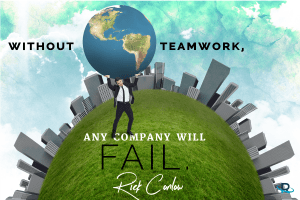 37 Terrific Teamwork Quotes“Alone we can do so little; together we can do so much.” – Helen Keller“Teamwork makes the dream work.” – Bang Gae“Individually, we are one drop. Together, we are an ocean.” – Ryunosuke Satoro “To build a strong team, you must see someone else’s strength as a complement to your weakness and not a threat to your position or authority.” – Christine Caine“Coming together is a beginning. Keeping together is progress. Working together is success.” – Henry Ford“The strength of the team is each individual member. The strength of each member is the team.” – Phil Jackson“Great things in business are never done by one person. They are done by a team of people.” – Steve Jobs“A single arrow is easily broken, but not ten in a bundle.” – Proverb“None of us is as smart as all of us.” – Ken Blanchard“In teamwork, silence is not golden. It is deadly.” – Mark Sanborn “A team is more than a collection of people. It is a process of give and take.” – Barbara Glacel“Talent wins games, but teamwork and intelligence win championships.” – Michael Jordan“Teamwork is the ability to work together toward a common vision. The ability to direct individual accomplishments toward organizational objectives. It is the fuel that allows common people to attain uncommon results.” – Andrew Carnegie“Unity is strength…when there is teamwork and collaboration, wonderful things can be achieved.” – Mattie Stepanek“The best teamwork comes from people who are working independently toward one goal in unison.” – James Cash Penney“Snowflakes are one of nature‘s most fragile things, but just look what they can do when they stick together.” –Vesta M. Kelly“Teamwork is what makes common people capable of uncommon results.” — Pat Summitt“Teamwork divides the task and multiplies the success.” – Unknown
37 Terrific Teamwork Quotes“Alone we can do so little; together we can do so much.” – Helen Keller“Teamwork makes the dream work.” – Bang Gae“Individually, we are one drop. Together, we are an ocean.” – Ryunosuke Satoro “To build a strong team, you must see someone else’s strength as a complement to your weakness and not a threat to your position or authority.” – Christine Caine“Coming together is a beginning. Keeping together is progress. Working together is success.” – Henry Ford“The strength of the team is each individual member. The strength of each member is the team.” – Phil Jackson“Great things in business are never done by one person. They are done by a team of people.” – Steve Jobs“A single arrow is easily broken, but not ten in a bundle.” – Proverb“None of us is as smart as all of us.” – Ken Blanchard“In teamwork, silence is not golden. It is deadly.” – Mark Sanborn “A team is more than a collection of people. It is a process of give and take.” – Barbara Glacel“Talent wins games, but teamwork and intelligence win championships.” – Michael Jordan“Teamwork is the ability to work together toward a common vision. The ability to direct individual accomplishments toward organizational objectives. It is the fuel that allows common people to attain uncommon results.” – Andrew Carnegie“Unity is strength…when there is teamwork and collaboration, wonderful things can be achieved.” – Mattie Stepanek“The best teamwork comes from people who are working independently toward one goal in unison.” – James Cash Penney“Snowflakes are one of nature‘s most fragile things, but just look what they can do when they stick together.” –Vesta M. Kelly“Teamwork is what makes common people capable of uncommon results.” — Pat Summitt“Teamwork divides the task and multiplies the success.” – Unknown
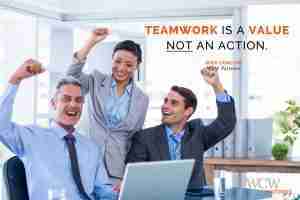 “We may have all come on different ships, but we’re in the same boat now.” — Martin Luther King, Jr.. “It is amazing how much people can get done if they do not worry about who gets the credit.” – Sandra Swinney“A team is not a group of people who work together but a team is a group of people who trust each other.” — Simon Sinek“I’ve never scored a goal in my life without getting a pass from someone else.” — Abby Wambach“Many hands make light work.” – John Heywood“The truth is teamwork is the heart of great achievements.” – John Maxwell“Synergy – the bonus that is achieved when things work together harmoniously.” – Mark Twain“Individual commitment to a group effort – that is what makes a team work, a company work, a society work, a civilization work.” – Vince Lombardi“The most important single ingredient in the formula of success is knowing how to get along with people.” – Theodore Roosevelt “It is literally true that you can succeed best and quickest by helping others to succeed.” — Napolean Hill“The key elements in the art of working together are how to deal with change, how to deal with conflict, and how to reach our potential… the needs of the team are best met when we meet the needs of individuals persons.” — Max De Pree“We must stand together; if we don’t, there will be no victory for any one of us.” — Mother Jones“The nicest thing about teamwork is that you always have others on your side.” — Margaret Carty
“We may have all come on different ships, but we’re in the same boat now.” — Martin Luther King, Jr.. “It is amazing how much people can get done if they do not worry about who gets the credit.” – Sandra Swinney“A team is not a group of people who work together but a team is a group of people who trust each other.” — Simon Sinek“I’ve never scored a goal in my life without getting a pass from someone else.” — Abby Wambach“Many hands make light work.” – John Heywood“The truth is teamwork is the heart of great achievements.” – John Maxwell“Synergy – the bonus that is achieved when things work together harmoniously.” – Mark Twain“Individual commitment to a group effort – that is what makes a team work, a company work, a society work, a civilization work.” – Vince Lombardi“The most important single ingredient in the formula of success is knowing how to get along with people.” – Theodore Roosevelt “It is literally true that you can succeed best and quickest by helping others to succeed.” — Napolean Hill“The key elements in the art of working together are how to deal with change, how to deal with conflict, and how to reach our potential… the needs of the team are best met when we meet the needs of individuals persons.” — Max De Pree“We must stand together; if we don’t, there will be no victory for any one of us.” — Mother Jones“The nicest thing about teamwork is that you always have others on your side.” — Margaret Carty
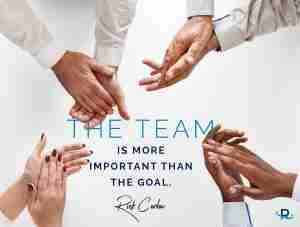 “Gettin’ good players is easy. Gettin’ ’em to play together is the hard part.” – Casey Stengel“Until all of us have made it, none of us have made it.” — Rosemary Brown“The whole is greater than the sum of its parts.” – Aristotle“When you need to innovate, you need collaboration.” — Marissa Mayer “In union, there is strength.” –Aesop“Collaboration has no hierarchy. The Sun collaborates with soil to bring flowers on the earth.” — Amit RayThe Powerful Business Benefits of Terrific Teamwork
“Gettin’ good players is easy. Gettin’ ’em to play together is the hard part.” – Casey Stengel“Until all of us have made it, none of us have made it.” — Rosemary Brown“The whole is greater than the sum of its parts.” – Aristotle“When you need to innovate, you need collaboration.” — Marissa Mayer “In union, there is strength.” –Aesop“Collaboration has no hierarchy. The Sun collaborates with soil to bring flowers on the earth.” — Amit RayThe Powerful Business Benefits of Terrific TeamworkThe benefits of terrific teamwork are significant. Only an egomaniac would not want to realize these bottom-line gains for their company or career. For yourself, why not embrace the power of unity?
Increased Productivity: According to a study by the McKinsey Global Institute, productivity improves by 20-25% in organizations with connected and collaborative employees.Higher Employee Engagement and Profitability: Gallup’s research suggests greater teamwork in a company leads to higher employee engagement and outperforming other organizations by 21% in terms of profitability.Improved Creativity and Innovation: A study published in the Harvard Business Review found that teams that work collaboratively are up to five times more likely to be high performing, leading to more innovative and creative solutions.Reduced Turnover and Absenteeism: A report by the Society for Human Resource Management (SHRM) found that organizations with effective teamwork experience 50% lower turnover rates.Cost Savings: A study by Deloitte Insights reported that companies that promote collaborative working are 30% more cost-effective.Customer Satisfaction and ROI: Finally, The Forrester Organization found companies with superb teamwork increased their NPS ratings from 14 to 58 with a net ROI of 437%.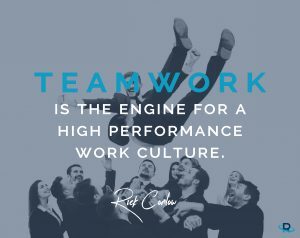 Pulling It All Together
Pulling It All TogetherA lack of team training, alignment, collaboration, positive communication, and trust are major obstacles to high performing teams. To achieve terrific teamwork, leaders must first put people first and apply Servant Leadership. Then, invest in the effort to teach it and align their organizational processes to support it. It is arduous work and that is why teamwork is so valuable. Few are willing to be consistent and persistent, but the bottom-line gains are worth it.
Also, go here for added insight and a complimentary resource called team training–4 Keys to Creating a High-Performance Team.
 In addition, see our Creating a High Performance Team Leadership Training–10 Powerful and Proven Lessons. Micro-learning and career advancement at your fingertips!
In addition, see our Creating a High Performance Team Leadership Training–10 Powerful and Proven Lessons. Micro-learning and career advancement at your fingertips!
Finally, see Rick’s newest book. The 5 Dynamics of Servant Leadership: How to accelerate your career and inspire your team! See his newest self-directed leadership training: 21 Servant Leadership Training Lessons.
Why not join us on LinkedIn for the Servant Leadership revolution that is taking place about the power of people? Go here: ServantLeadership@RickConlow International. THANK YOU!
CEO/Founder, Rick Conlow International: RCI transforms managers into leaders by coaching and training them to become Servant Leaders. Clients achieve record-breaking performances in sales growth, customer experience improvement, employee engagement and leadership effectiveness. Furthermore, RCI’s online resources coach and train all managers or employees to higher levels of career success.
Partner with RCI Consulting Services. Visit the RCI store: Books & Training Resources.
The post 37 Terrific Teamwork Quotes: Embracing the Power of Unity appeared first on Rick Conlow.
July 11, 2023
Great Companies and Leaders Elevate People First
Great companies and managers elevate people first. Yet, employees’ are disengaged to the tune of 85% worldwide. In the US it is 70%. Either number is disastrously poor. What does this mean to a company? For example, high employee disengagement equals:
Poor moraleMore employee turnoverAbsenteeismPoor customer serviceLower productivityFewer salesLack of employee loyaltyLess profit.No company in its right mind would want this. Yet, every day far too many companies and managers treat people in ways that generate an unproductive work environment.
3 Primary Reasons Companies Neglect Employees The first reason for neglect is the thirst for profit sidetracks their commitment to people. The focus is on the bottom-line, the result. Business schools around the world teach this. In addition, managers lack training in the process of employee engagement that drives customer engagement which sparks greater profitability. The American Customer Satisfaction Index (ACSI) has long proven the connection between customer satisfaction and a company’s financial success. Most importantly, the service profit chain has clearly demonstrated the relationship between employee engagement, customer engagement, and profits.
The first reason for neglect is the thirst for profit sidetracks their commitment to people. The focus is on the bottom-line, the result. Business schools around the world teach this. In addition, managers lack training in the process of employee engagement that drives customer engagement which sparks greater profitability. The American Customer Satisfaction Index (ACSI) has long proven the connection between customer satisfaction and a company’s financial success. Most importantly, the service profit chain has clearly demonstrated the relationship between employee engagement, customer engagement, and profits.
The second reason for neglect is that managers lack basic leadership skills. Derailment studies consistently show that a least 82% of managers fail. Managers falter because of poor:
Results-usually because of people issues or bad judgment.People skills (insensitive, arrogant, dictator).Delegation.Conflict resolution.Trust levels.Planning and decision-making.Adaption of their leadership approach to situations and people.Finally, most companies do not really care. They see employees as a cost and a commodity not as valuable partners, these companies and their cultures lack integrity. Unfortunately, their approach involves only the selfish goals of their executives and shareholders. The best example of that is when a Fortune 500 companies, in response to a slower growth rate, lay off thousands to restructure to satisfy Wall Street analysts. Subsequently, it happens repeatedly. As a result, employees’ rebel and it negatively impacts companies’ performance. The Great Resignation and Quiet Quit testify to this.
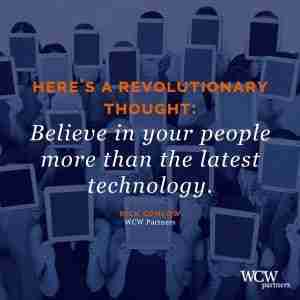 What can companies do?
What can companies do?In summary, if you study the “Best Places to Work”, companies, you will find these characteristics:
Clear mission, vision, and values that indicate people-first.Pay fairly and most often above norm.Benefits are above average.Positive communication and employee engagement.Provide generous amounts of training and education.Extraordinary teamwork.Servant Leadership approaches.Positive performance management.Praise, recognition, and celebration.Listening, feedback, inclusion, and improvement.Pulling It All TogetherIn conclusion, if a company wants to (the key is if the executives care) it can begin to improve employees’ attitudes by changing leadership and business practices. Effective change requires hard work, diligence, and a willingness to be better. However, CS Lewis said, “It may be hard for an egg to turn into a bird: it would be a jolly sight harder for it to learn to fly while remaining an egg. We are like eggs at present. And you cannot go on indefinitely being just an ordinary, decent egg. We must be hatched or go bad.”
Also, do you want more ideas on how to engage and inspire your team? Check out this complimentary eBook, How to Motivate-NO-Inspire People, Ten keys to Employee Engagement.
 Finally, see Rick’s newest book. The 5 Dynamics of Servant Leadership: How to accelerate your career and inspire your team! See his new self-directed leadership training: 21 Servant Leadership Training Lessons.
Finally, see Rick’s newest book. The 5 Dynamics of Servant Leadership: How to accelerate your career and inspire your team! See his new self-directed leadership training: 21 Servant Leadership Training Lessons.
July 2, 2023
Preventing the Exodus of Quiet Quitting at Work
The phrase–exodus of quiet quitting at work–refers to employees who still go to work. However, they underperform purposefully. A company must understand that quiet quitting in the workplace is happening and most likely lethal. The employees disengage from their work and organization without overtly expressing their intentions or concerns. Rather than openly resigning or causing disruptions, the employee adopts a passive approach by reducing their efforts, involvement, and commitment to their job. Quiet quitting typically occurs when an employee becomes dissatisfied, demotivated, or disillusioned with their work environment, supervisor, or job responsibilities.
 Quiet quitting is another way to illustrate chronic employee disengagement. People resist going the extra mile or making the extra effort to get the job done. The essence of it means employees separate career success from their ego. And of course, organizations and managers want the hustle and the desire to get ahead. As a result, employee attitudes decline, and performance suffers.
Quiet quitting is another way to illustrate chronic employee disengagement. People resist going the extra mile or making the extra effort to get the job done. The essence of it means employees separate career success from their ego. And of course, organizations and managers want the hustle and the desire to get ahead. As a result, employee attitudes decline, and performance suffers.
Quiet quitting is another way to illustrate chronic employee disengagement. People resist going the extra mile or making the extra effort to get the job done. The essence of it means employees separate career success from their ego. And of course, organizations and managers want the hustle and the desire to get ahead. So, the battle escalates poor working conditions and employee turnover.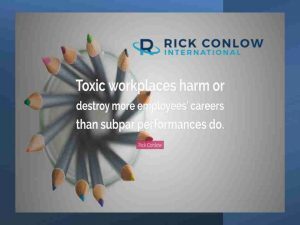
Quiet quitting downloads significant negative effects on the business results and overall performance of an organization. Gallup shows that “quiet quitting” affects the global economy by a $8.8 Trillion loss or 9% of the GDP. Any reasonable and decent company or manager wants to avoid their part of that loss.
Decreased productivity: Quieting disengaged employees tend to be less motivated, which leads to decreased productivity. They invest less effort and time in their work, resulting in lower output and quality of work.Poor work quality: Disengaged employees do not take extraordinary pride in their work, leading to a decline in the quality of their output. This negatively impacts customer satisfaction, the reputation of the organization, and the bottom-line.Increased errors and mistakes: When employees mentally check out, they are more likely to make errors or overlook vital details. This results in increased inefficiencies, rework, and financial losses for the organization.Lower employee morale: The presence of quietly disengaged employees affects the morale of other team members. When employees witness their colleagues’ lack of enthusiasm or commitment, it creates a negative work environment, dampens morale, and further contributes to a decline in productivity.Negative workplace culture: Quiet quitting spreads within the organization, eating away at a positive workplace culture. If disengagement becomes prevalent, it fosters a sense of apathy and complacency among employees, eroding teamwork, collaboration, and innovation.Increased turnover and talent loss: Quiet quitting eventually leads to increased employee turnover. Employees who feel disconnected from their work and the organization are more likely to seek opportunities elsewhere. Plus, it influences the good performers to seek employment elsewhere. Losing talented and experienced employees is costly for an organization in terms of recruitment, training, and knowledge transfer.Difficulties in attracting new talent: A negative reputation resulting from elevated levels of turnover makes it challenging for an organization to attract new talent. The perception of low employee engagement or a toxic work environment deters the best candidates.Customer dissatisfaction: Disengaged employees are less likely to provide excellent customer service or go the extra mile to meet customer needs. This results in dissatisfied customers, decreased customer loyalty, and potential damage to the organization’s reputation.Overall, the cumulative impact of quiet quitting erodes in multiple ways an organization’s business results. Therefore, addressing employee disengagement and quiet quitting is crucial for maintaining a healthy and thriving company.
What is the Antidote to the Exodus by Quiet Quitting?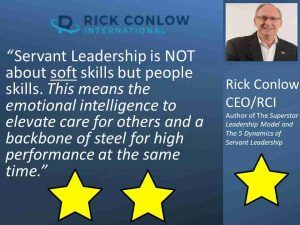
To address the issue of quiet quitting and mitigate the negative impact organizations must take critical steps to improve. Consider these proven antidotes that enhance organizational effectiveness to reduce the likelihood of employees silently disengaging and quitting.
Develop Servant Leaders: Invest in Servant Leadership development as the “real” antidote to employee disengagement and quitting. Equip all levels of management and executives with the new skills and knowledge needed to effectively inspire their teams. This includes fostering positive communication, emotional intelligence, performance coaching, and conflict resolution abilities. As importantly, create processes to support and elevate them because management disengagement is a problem as well.Foster open communication: Establish a culture of open and transparent communication throughout the organization. Encourage managers and executives to regularly communicate with their teams, actively seek and listen to employee feedback, and provide opportunities for employees to voice their concerns or ideas. You achieve this with a positive intent through regular team meetings, feedback sessions, performance discussions, company update sessions, and an open-door policy.Recognize and reward employees: Implement recognition programs that acknowledge and appreciate employees’ contributions. You accomplish this through formal recognition programs, performance-based bonuses, or simply expressing gratitude and appreciation for a job well done. Recognizing employee efforts helps boost morale and motivation, reducing the likelihood of quiet quitting.Promote a healthy work-life balance: Encourage work-life balance by implementing policies that support flexible working arrangements, promote time off and vacations, and discourage excessive overtime. This helps employees maintain a healthy equilibrium between their professional and personal lives, reducing burnout and stress.Create growth opportunities: Provide clear pathways for career development and advancement within the organization. Offer training programs, mentorship opportunities, and chances for employees to acquire new skills and take on challenging assignments. When employees see a future for themselves within the organization, they are more likely to step up and get more involved.Lead by example: Leaders should set a positive example for their teams. Demonstrate integrity, professionalism, and a strong work ethic. Show genuine care and concern for employees’ well-being and professional growth. By modeling desired behaviors, leaders can inspire and motivate their teams. This is a key practice of Servant Leaders.Address issues promptly: Actively address any concerns or conflicts that arise within the organization. Create channels for employees to report issues confidentially and ensure appropriate action and tracking to follow-up to resolve problems. Promptly addressing issues demonstrates a commitment to employee well-being and fosters a positive work environment.Continuously improve leadership practices: Encourage leaders to engage in self-reflection and seek feedback from their teams. Implement mechanisms for evaluating leadership effectiveness and provide on-going opportunities for leaders to improve their skills and address any areas of weakness.Pulling It All Together By implementing these antidotes, organizations will cultivate servant leadership practices that foster a people-first work culture. Consequently, research shows it vigillantly reduces the likelihood of quiet quitting and employee disengagement. In conclusion, as companies continue to experience labor shortages, engagement issues, and retention problems the need for Servant leadership grows. Why? Because it elevates people-first. Servant leadership creates the positive work environment that employees desire and seldom experience. And it produces generous bottom-line benefits for organizations that executives need and want.
By implementing these antidotes, organizations will cultivate servant leadership practices that foster a people-first work culture. Consequently, research shows it vigillantly reduces the likelihood of quiet quitting and employee disengagement. In conclusion, as companies continue to experience labor shortages, engagement issues, and retention problems the need for Servant leadership grows. Why? Because it elevates people-first. Servant leadership creates the positive work environment that employees desire and seldom experience. And it produces generous bottom-line benefits for organizations that executives need and want.
The Servant Leadership potential is becoming increasingly important for leaders who want to separate themselves from competitors through a healthier and likewise higher-performing organization. Engage servant leadership today. It is the next revolution in leadership thought and practice. As the pioneer Robert Greenleaf declared years ago: “Good leaders must first become good servants.”
Why not join us on LinkedIn for the Servant Leadership revolution that is taking place about the power of people? Go here: ServantLeadership@RickConlow International. THANK YOU!
Also, click here for excellent insight and a complimentary resource called–4 Keys to Creating a High-Performance Team.
 In addition, see our RealTime Learning & Training leadership and personal development website–over 250 resources. Micro-learning and career advancement at your fingertips!
In addition, see our RealTime Learning & Training leadership and personal development website–over 250 resources. Micro-learning and career advancement at your fingertips!
Finally, see Rick’s newest book. The 5 Dynamics of Servant Leadership: How to accelerate your career and inspire your team! See his newest self-directed leadership training: 21 Servant Leadership Training Lessons.
CEO/Founder, Rick Conlow International: RCI transforms managers into leaders by coaching and training them to become Servant Leaders. Clients achieve record-breaking performances in sales growth, customer experience improvement, employee engagement and leadership effectiveness. Furthermore, RCI’s online resources coach and train all managers or employees to higher levels of career success.
Partner with RCI Consulting Services. Visit the RCI store: Books & Training Resources.The post Preventing the Exodus of Quiet Quitting at Work appeared first on Rick Conlow.
June 19, 2023
Mastering the Art of Leading Remote Work Teams
The number of companies adopting and managers leading remote work teams has increased significantly. The COVID-19 pandemic initiated this trend. Now however, controversy about the productivity challenges of leading remote work teams confront organizational assumptions about its effectiveness.
According to Gitnux blog 56% of companies actively use remote workers. Forty-four percent of companies do not hire remote workers. And 62% of employees claim to work remotely at least occasionally. Sixteen percent of companies hire remote workers exclusively and designed their organizations to support it, such as Gitlab, Buffer, and Automattic. The Council on Foreign Relations shares global research on how productivity increases in remote work settings. Owl Labs date says they are 47% more productive. In contrast, recent data shows a decrease in productivity by remote workers. Experts believe other factors relate to this information such as a stagnant economy, worker burnout, “quiet quitting in response to toxic work environments, and inflation.
It is worth noting that the exact extent of remote work adoption varies across countries, industries, and individual company policies. The trend toward remote work models is likely to continue evolving as organizations assess the long-term benefits and challenges associated with them. However, companies like Tesla, Amazon, Disney, Starbucks, Walmart, GM, UPS, and Dell have already ended remote work in 2023. They claim productivity decreases by 3.7 hours a week.
Unfortunately, global employee disengagement is a staggering 85%. In addition, Gallup research shows 82% of managers are failing. Wouldn’t you agree there is an urgent need for improvement in working relationships with employees working from home, the factory, or the office? Bottom-line, companies with people-first culture led by Servant Leadership principles outperform their competitors. The real issue with whether remote work works involves a company’s commitment to people.
9 Challenges for Leading Remote Work Teams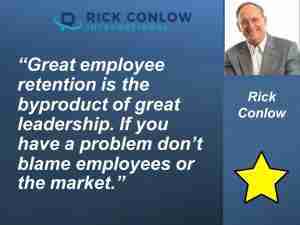 While most remote workers are diligent and committed to their work, there are cases where employees may take advantage of the flexibility that remote work offers. However, Amazon’s Mechanical Turk survey found that the average remote worker spent nine hours a week doing other tasks during work schedules besides working. Here are nine roadblocks that make it difficult for remote work to work for employees and managers.
While most remote workers are diligent and committed to their work, there are cases where employees may take advantage of the flexibility that remote work offers. However, Amazon’s Mechanical Turk survey found that the average remote worker spent nine hours a week doing other tasks during work schedules besides working. Here are nine roadblocks that make it difficult for remote work to work for employees and managers.
It is important to note that while remote work has its challenges and controversies, it also offers viable benefits. These benefits include increased flexibility, access to a broader talent pool, reduced commuting, and potential physical office cost savings. The level of controversy surrounding remote work varies depending on individual perspectives, industry-specific factors, and cultural norms. And, of course, management commitment and skills in supporting remote work.
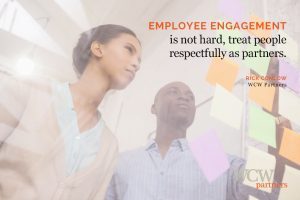 10 Ways to Master the Art of Leading Remote Work Teams
10 Ways to Master the Art of Leading Remote Work TeamsResearch shows that managers impact up to 70% of employee productivity. Here are ten employee focused strategies that leaders can implement to uniquely and positively managing highly productive remote work teams. Obviously, variations of these approaches are valuable for any employee to increase employee engagement.
Set Clear Expectations and Goals: Clearly communicate expectations regarding work hours, availability, communication channels, and performance goals. Define project milestones, deadlines, and deliverables. Providing clarity helps reduce ambiguity. Do this weekly to monthly depending on the situation.Establish Consistent Communication: Foster open and frequent communication with remote workers. Schedule regular check-ins, team meetings, and one-on-one discussions to stay connected. Ask for and give regular feedback to address concerns and maintain a sense of collaboration. Utilize video conferencing tools to enhance face-to-face interactions.Leverage Technology: Provide remote workers with the necessary tools and technology to perform their tasks efficiently. This includes project management software, communication tools, document sharing platforms, and virtual collaboration tools. Ensure employees have reliable access to these tools and provide training if needed.Promote Team Collaboration: Encourage collaboration among remote team members by using virtual platforms and project management tools. Establish a culture of sharing ideas, knowledge, and best practices by leading by example. Facilitate virtual team-building activities to build rapport and strengthen relationships.Focus on Results: Shift the focus from measuring hours worked to evaluating goal progress, outcomes, and results. This approach encourages accountability and allows employees to manage their time and tasks effectively.Support Work-Life Balance: Promote the importance of setting boundaries between work and personal life. Encourage breaks and time off to prevent burnout. Lead by example and demonstrate a healthy work-life balance yourself. One manager sent emails at all hours of the day and expected people to respond. This process demoralized the team and drove productivity down.Provide Professional Development and Training Opportunities: Offer remote employees opportunities for skill development and career growth. Provide access to online training resources, virtual workshops, or conferences. Included training in team meetings. Encourage employees to engage in continuous learning and provide support for their professional advancement. Also, do it yourself.Foster a Positive Remote Culture: Recognize and appreciate remote employees’ contributions. Research shows added incentives to top performers increases productivity. Celebrate milestones, achievements, and successes. Encourage virtual social interactions and initiatives to maintain team morale and engagement. This means more than just doing team meetings on a weekly basis. One team includes peer recognition sharing at the end of their weekly department meetings. This helped build team trust and camaraderie.Regular Performance Feedback: Provide regular and constructive feedback to remote workers. Conduct weekly but short virtual performance discussions to offer coaching. Give praise for achievements, address areas for improvement and ask for and listen to feedback.Adapt Your Leadership Style: Recognize that leading remote workers may require adjustments to leadership approaches. Trust and empower employees to make decisions and take ownership of their work. Emphasize communication, collaboration, and autonomy while providing support and guidance when needed.By consistently implementing these strategies, leaders can create a positive environment for inclusion and teamwork in remote settings.
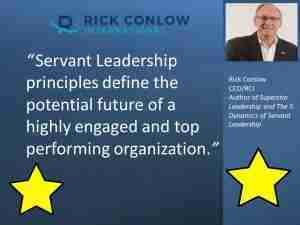 What is the potential payoff from remote work teams?
What is the potential payoff from remote work teams?The bottom-line payoff for remote work can involve these key benefits:
Increased Productivity: Remote work can lead to enhanced productivity due to reduced distractions, elimination of commuting time, and the ability to work in a personalized and comfortable environment. In a survey conducted by Airtasker, remote employees worked 1.4 more days every month, or 16.8 more days every year, than office workers. Studies also show remote workers often experience higher job satisfaction and are more motivated, resulting in improved performance and output.Cost Savings: Employees can save on transportation, parking, and commuting expenses. Employers can reduce costs associated with office space, utilities, and other overhead expenses. Additionally, remote work creates opportunities for accessing a global talent pool, potentially reducing recruitment and relocation costs.Improved Work-Life Balance: A Slack study showed that 94% of employees want schedule flexibility which includes remote work potential. This flexibility can lead to reduced stress, increased job satisfaction, and better overall well-being. Remote workers often have more control over their schedules, allowing them to fulfill personal and work obligations more effectively.Enhanced Employee Retention and Recruitment: Offering remote work options can be a valuable recruitment tool, attracting top talent who prioritize flexibility and work-life balance. Remote work can also contribute to higher employee retention rates, as it demonstrates trust, autonomy, and a commitment to employee well-being. Organizations that embrace remote work are more likely to retain and attract skilled professionals.Environmental Benefits: Remote work has a positive impact on the environment by reducing carbon emissions associated with commuting and office-related activities. With fewer employees commuting to a central location, there is a decrease in traffic congestion and air pollution. Remote work aligns with sustainability goals and contributes to a greener, more eco-friendly work culture.Business Continuity and Disaster Preparedness: Remote work provides a robust solution for maintaining business continuity during unforeseen events, such as natural disasters, pandemics, or other disruptions. Having a remote work infrastructure in place enables organizations to continue operations and minimize downtime, ensuring uninterrupted service delivery to clients and customers.Increased Diversity and Inclusion: Remote work allows organizations to tap into a more diverse talent pool, as geographical constraints are no longer a barrier. It enables individuals from diverse backgrounds, abilities, and locations to participate in the workforce, fostering diversity and inclusion within organizations.Pulling It All TogetherWhile the benefits of remote work are potentially significant. Organizations need to assess their specific contexts and implement remote work policies and practices that align with their strategic vision. Most importantly, consistently implementing people-first or servant leadership methods to fully leverage the bottom-line payoff. In summary, gleam the wisdom from these quotes.
“Do you want to access talent everywhere, or just in specific markets? If the answer is everywhere, you need to be at least open to the possibility of remote work.” – Katie Burke“Focus on being productive instead of busy.” – Tim Ferriss“In terms of engaging and influencing your team, especially in a virtual environment, how you say something, or your vocal quality, can sometimes be more important than what you say.” – Hassan Osman“The key is not to prioritize what’s on your schedule, but to schedule your priorities.” – Stephen Covey“Leadership is not an affair of the head. Leadership is an affair of the heart.” – J. Carla NortcuttWhy not join us on LinkedIn for the Servant Leadership revolution that is taking place about the power of people? Go here: ServantLeadership@RickConlow International. THANK YOU!
Also, click here for excellent insight and a complimentary resource called–4 Keys to Creating a High-Performance Team.
 In addition, see our RealTime Learning & Training leadership and personal development website–over 250 resources. Micro-learning and career advancement at your fingertips!
In addition, see our RealTime Learning & Training leadership and personal development website–over 250 resources. Micro-learning and career advancement at your fingertips!
Finally, see Rick’s newest book. The 5 Dynamics of Servant Leadership: How to accelerate your career and inspire your team! See his newest self-directed leadership training: 21 Servant Leadership Training Lessons.
CEO/Founder, Rick Conlow International: RCI transforms managers into leaders by coaching and training them to become Servant Leaders. Clients achieve record-breaking performances in sales growth, customer experience improvement, employee engagement, employee retention, and leadership effectiveness. Furthermore, RCI’s online resources coach and train all managers or employees to higher levels of career success.
Partner with RCI Consulting Services. Visit the RCI store: Books & Training Resources.The post Mastering the Art of Leading Remote Work Teams appeared first on Rick Conlow.

